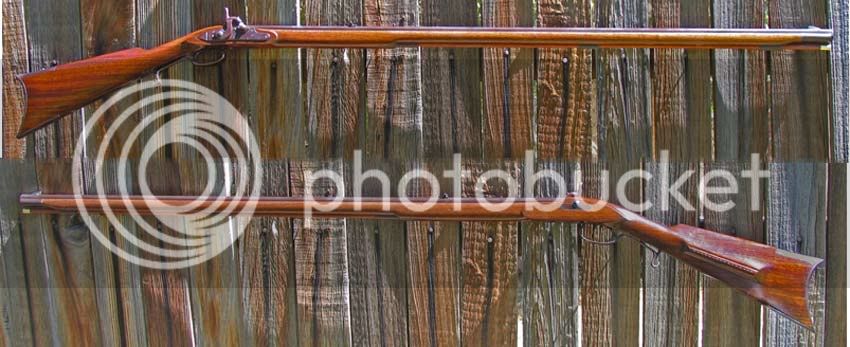- Joined
- Feb 26, 2007
- Messages
- 30
- Reaction score
- 24
What's the difference between Southern Mountain Rifles and Tennessee Rifles? Looking at catalogs and internet websites, I don't see much of a difference between the two.

Just different labels gun builders hang on their products for increased sales. There are as many "schools" in the iron mounted rifles as there are in Pennsylvania built guns.BruceB said:What's the difference between Southern Mountain Rifles and Tennessee Rifles? Looking at catalogs and internet websites, I don't see much of a difference between the two.

To answer the question, yes some rounding could be done to the lockplate but the radius probably couldn't exceed 1/4" without getting into the area where the sear spring exists.CrossXstix said:Being that the Siler is one of the better locks, can the pointed tail be filed and shaped to a more rounded look before inletting?
David
I have a TMV Tennessee on order it will come with a Siler lock, I don't reenact so I could care less if it's correct. All I need it to do is go off when it should.Zonie said:I agree but I should point out to anyone new to the various guns and the locks that are available, a Siler lock is an excellent lock.
The reason for avoiding them with a Tennessee or Southern Mountain rifle is because the Siler lock is a Germanic shaped lock with a pointed tail at the rear.
The Tennessee and Southern Mountain style rifles typically use a lockplate that is rounded at the rear more like an English style lock or a TC or GPR.
That said, if a person doesn't really care if the gun actually looks like most original Tennessee or Southern Mountain style of rifles, a Siler will work just fine.
An example of this is the Pecatonica River Tennessee with a Siler Flintlock I converted to percussion lock.


Enter your email address to join: